The approach based on analysing wastewater to monitor drugs or pathogens in the population had been used for decades before it became widespread during the COVID 19 pandemic. We have asked experts located in a number of different nations to share their views on the potential and limitations of wastewater-based epidemiology in the future.
Andrew C. Singer
Despite some evidence in the early 20th century that poliomyelitis virus could be recovered from many bodily fluids1, including stool2, it wasn’t until 1939 that wastewater was first used for poliovirus surveillance3 and it would be an additional 60+ years, in 2003, before the World Health Organisation (WHO) formally adopted wastewater-based epidemiology (WBE) for poliovirus4. The WHO program aimed to pinpoint areas where polio transmission occurred and ultimately confirm polio eradication. Concurrent with years of successful noose tightening around poliovirus through WBE, academia developed WBE techniques targeting illicit drug use, pharmaceutical prescribing and a range of health biomarkers. The coincidence of a critical mass of academics invested in wastewater analysis, the cost-effectiveness of molecular analysis of pathogens using qPCR and sequencing, and the emergence of SARS-CoV-2 at a global scale set the stage for a WBE renaissance in pathogen surveillance in 2020.
Hundreds of individual research groups and governments worldwide assembled local, regional and national COVID-19 surveillance programmes that generated SARS-CoV-2 abundance and/or prevalence data in a manner that was cheaper, faster, more unbiased and more granular than traditional epidemiology surveillance programmes. Despite these advances, several systematic challenges emerged, which limited the approach’s scalability and sustainability as an epidemiological tool.
The main issue was collecting both grab or composite wastewater samples and couriering them to a laboratory for extraction and analysis. The speed of this pipeline directly impacts the efficacy of WBE as a tool for rapid intervention and its impact. The cost of staffing daily sample retrievals exceeded half the cost of running the entire network. Many public health departments were initially unprepared for how to use WBE data — but once adopted, the speed of data provision became the main limitation for informing policy and halting the spread of the pandemic. The demand for near-real-time insights is unachievable using the current system. A fit-for-purpose wastewater surveillance system necessitates in-field automation.
In-field automation demands collecting a representative sample, in-field extraction, analysis and data communication — termed an ‘End-to-End’ (E2E) WBE solution. Implementation of an automated E2E could transform the current WBE paradigm. Whereas the current WBE surveillance system provides public health teams with data that reflects the state of the world as it was two to seven days in the past, an automated E2E system would aim to reduce that delay to hours. A fit-for-purpose automated E2E will minimise the time between sample collection and data provision to hours. Moreover, an automated E2E can take as many as 12 samples per day compared to the typical one per day with the current system.
A fit-for-purpose E2E must be sustainable, enabling local, regional, national and international reach, achievable only by minimising the need to visit the E2E and delivering multi-component datasets at a fraction of current costs. The result is that public health data will become ‘democratised’, that is, everyone will passively contribute to national surveillance, not just those captured by hospital and traditional surveillance approaches.
An E2E must be flexible enough to search for known-knowns, known-unknowns, as well as unknown-unknowns. Each of these targets comes with unique challenges for which some solutions already exist and multiple viable solutions are likely to emerge. What is perhaps surprising is the lack of international focus and investment dedicated to developing these automated E2E systems, given the lessons learned during the COVID-19 pandemic and the obvious global costs that could have been averted with early and well-informed intervention. A recent US National Academy of Science and Medicine report described how WBE contributed to epidemiological surveillance during the pandemic and how it could contribute to public health surveillance in the future5. Disappointingly however, the authors neglected to mention the role that automation can play in making a step change in pandemic preparedness — an innovation that can help make public health surveillance more timely, affordable and sustainable.
The United Kingdom stands out from other countries, as it has invested in automated wastewater surveillance research and development for delivering WBE since early 2021. Despite this national vision for bio-surveillance, an E2E system is still not operational. Many technological hurdles remain in delivering a fit-for-purpose E2E, including innovative anti-ragging sewage acquisition tools, clever concentration, lysis and clean-up steps and a diversity of highly specific and sensitive sensors, with the capability of multiplexing, hyperplexing and sequencing. We are in a race against time to develop these scalable E2E prototypes for an international biomonitoring network ahead of the next global biological threat.
The innovation needed to deliver an E2E for wastewater surveillance is directly transferable to a range of One Health applications, including sampling of environmental waters; monitoring of farm runoff and biosecurity, compliance monitoring of wastewater treatment plants; bathing water monitoring; source apportionment of microbial pollutants; eDNA biodiversity monitoring; and invasive species monitoring. Chemical pollutant or biochemical monitoring can be achieved using chemical sensors integrated into the E2E. The use of E2E instrumentation for environmental surveillance has enormous potential to service the full remit of environmental regulator obligations, generating near-real-time data that, ultimately, offer a step-change in monitoring and human and environmental protection.
Janelle R. Thompson
The COVID19 pandemic has demonstrated the interconnection of global public health. Worldwide, wastewater testing has been shown to be an effective community surveillance strategy for COVID-19, capturing signals from infected individuals who are symptomatic and asymptomatic alike. In Singapore, sampling of wastewater from infrastructure connected to buildings (for example, sewers, sanitary lines) and treatment plants has been used to provide situational awareness of the distribution of SARS-CoV-2, allowing wide-area surveillance of communities and supporting close monitoring of clusters and cases in buildings in a non-invasive way and at a relatively low cost. As we move to a period of endemic COVID and case data becomes less available with reduced mandates for individual testing, wastewater surveillance can continue to provide key information about relative trends in virus circulation over time.
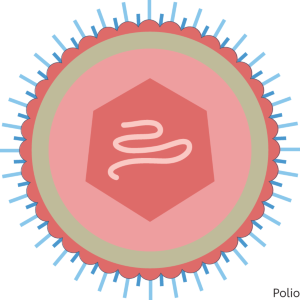
Through the pandemic our team at Nanyang Technological University, Singapore, together with collaborators, have engaged in analyses of wastewater viral trends, methods development to track variants of concern, proof-of-concept demonstration of wastewater surveillance for arboviral disease agents and development and operation of our campus wastewater surveillance network. As part of this work, we were recently able to link detection of variants of concern in Singapore’s wastewater with policy changes at the international border6. We observed that at the start of Singapore’s Omicron wave in January 2022, both the BA.1 and BA.2 sub-lineages of the Omicron VOC became detectable in wastewater from treatment plants at the same time, almost two months after the initial BA.1 detection in South Africa and Botswana. This coincided with relaxation of governing policies when nation-wide vaccination targets were met and the spread of Omicron was deemed an acceptable risk. We observed from wastewater samples that BA.2 became the dominant variant by the end of January 2022 and completely displaced BA.1 by mid-March 2022. This contrasts what we had seen previously in Italy and the USA where BA.1 was detected earlier and preceded BA.2 (ref. 7). In this study, we employed allele-specific (AS) reverse transcription-qPCR assays that had developed the target mutations in the spike protein associated with each prevailing variant sub-lineage. Our university campus sites, representing much smaller catchment populations, were similarly positive for BA.1 and/or BA.2 in the same week as first detection at the treatment plants. These results corroborated clinical incidence of the Omicron lineages in Singapore and indicated minimal silent circulation prior to January 2022 despite sporadic imported cases. The operationalization of wastewater testing through Singapore’s public agencies and universities has been driven by pandemic response. An important consideration is how information resulting from such surveillance is managed and shared. In the case of Singapore the National Environment Agency determined a wastewater viral load index which was published weekly and communicated nationwide trends in SARS-CoV-2 virus levels in wastewater during the Delta and Omicron waves. Having access to the trending COVID19 cases and SARS-CoV-2 RNA levels in wastewater can help inform personal decisions to manage potential exposures, like whether or not to wear a mask and spend time in crowded areas. As we move towards a post-pandemic future where COVID-19 is treated as an endemic disease we believe that wastewater surveillance can remain future-ready to integrate surveillance of additional disease targets that are public health priorities as well as emerging SARS-CoV-2 variants of concern, and new or unknown pathogens in a ‘disease X’ framework as highlighted by the World Health Organization. To that end we are working towards approaches that cast a wider net for untargeted agents (for example, using next-generation sequencing) and we have evaluated protocols for detecting RNA shed during arboviral infections (Dengue, Zika and Yellow Fever) demonstrating proof of concept for the application of wastewater surveillance to their tracking8. While we have found it difficult to detect Dengue virus at expected levels in wastewater due to its low shedding rates (orders of magnitude lower than SARS-CoV-2) we have noted that wastewater surveillance appears most promising for arboviruses shed at higher levels such as Zika or Yellow Fever viruses. As we transition to living with endemic COVID-19 our team is continuing our work to maintain vigilance for high-risk SARS-CoV-2 variants that may emerge and to develop methods to track additional pathogens that represent threats to global and local public health.
César R. Mota Filho
Wastewater surveillance has recently gained prominence worldwide as a powerful tool in public health. In Brazil, the most important achievement of WBE during the COVID-19 pandemic was to render visible the infected population groups that were unaccounted for by clinical testing data. This was essential in a country where anti-science-dominated politics was responsible for inadequately testing the population and failing to support basic pandemic control measures such as social distancing, use of masks and even vaccination. Unsurprisingly, official data indicate that total COVID-19 deaths in the country have reached 700 thousand in April 2023, second only to the United States, although the actual total number of covid deaths is believed to be far greater. Highly vulnerable populations, who depend on crowded public transportation for commuting, work in low-paying essential jobs, live in high-occupancy, small housing and have limited access to health care were tested for COVID-19, and therefore considered in official statistics, only when they were hospitalised or died. As in other developing countries, only a small part of that population is served by sewers. In the absence of adequate testing data during the pandemic, decentralised SARS-CoV-2 surveillance in sewer systems serving vulnerable neighbourhoods unveiled the effects of stark inequalities and environmental injustice9. Public health data based on WBE collected on sub-catchment scale could effectively be used to identify and address health threats in particularly vulnerable areas, which could hopefully prompt the onset of tangible, targeted pandemic control actions, including clinical testing, specific social distancing and isolation measures and emergency transport and accommodation to minimize transmission.
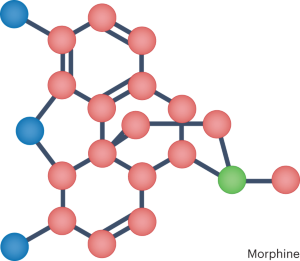
In Brazil, WBE projects carried out during the COVID-19 pandemic were led primarily by universities, research institutes or regulatory agencies with the participation and support of water and sanitation companies and health authorities at municipal- or state-level. SARS-CoV-2 WBE data were periodically published on publicly available online dashboards, weekly or monthly bulletins or warning alerts during aggravating periods. Quickly, SARS-CoV-2 WBE data generated strong media attention and public interest, making headlines in the main news outlets and even on national TV. However, it took some time to build confidence on SARS-CoV-2 WBE data, and only by the second year of the pandemic, health authorities and stakeholders started discussing WBE data in official meetings, and de facto considering WBE data in decision making. This was aided by the realisation that this type of data is extremely cost-effective in providing early warning for new cases (typically a few days) and new hospitalizations (usually several days or a few weeks). This information can be extremely valuable when allocating scarce resources. In addition, WBE data was proven to be more easily shielded from political influence as it is behaviour-independent and does not depend on clinical testing. Yet, it remains a challenge to change the role of health authorities regarding WBE data: from passive consumers and users of the data to owners and leaders in the efforts to generate them and develop policies and actions based on them. The actual benefits of WBE during the COVID-19 pandemic could have been greater if it had been accompanied by specific actions from health authorities and stakeholders.
Further expansion of the application of WBE to monitor the health of the population in vulnerable conditions may be limited by a lack of sewage collection. Hopefully, it has now become abundantly clear that people living without access to adequate sanitation (sewered or non-sewered solutions) face a situation of double disadvantage as they are at higher risk of suffering from poor hygiene and are deprived of the early-warning benefits of WBE (ref. 10). Ideally, WBE could become an important driver in efforts to universalize access to adequate sanitation, for example by creating financial incentives for sanitation service providers to increase sewer coverage and implement features such as flowrate meters and auto-samplers (at sub-catchment level and at the treatment plant). Flowrate measurements (or good estimates) are important because they are used, together with measured concentrations of the target organism or chemical compound, to determine loads, which are very useful when normalising and evaluating data. Vulnerable populations unserved by sewers, including those in rural settings, could benefit from WBE based on sampling of septic tanks or other sanitation solutions. Under these conditions, WBE data would be useful to assess health status and prevalence of diseases, rather than providing early warning. When no sanitation solution is in place (for example, open defecation), surveillance of nearby surface water bodies could generate useful, although limited, WBE data.
As widely shown during the COVID-19 pandemic WBE worked very well for the cost-effective surveillance even of an enveloped RNA virus prone to quick decay under the harsh environmental conditions of sewers. It is likely that it will also work for other infectious diseases, enteric or respiratory, and even for those that are not typically designated as waterborne or water-related, such as influenza, herpesvirus and papillomavirus. Ideally, it will also work on emerging and neglected infectious diseases, including Dengue, Zika, Chikungunya and Yellow Fever, which represent an extremely heavy burden on developing countries. Due to the increasing trend of urbanisation, scarce or intermittent water supply and climate change, arboviruses, especially Dengue, are now regarded as diseases of concern, requiring extensive surveillance.
Surveillance of pathogens via WBE under the One Health framework is essential for the prevention and early response to future pandemics. The One Health approach is based on the premise that human, environmental and animal health are innately interrelated. By taking all three aspects of health into account, solutions can be generated that not only address the health problems of a specific group but may mitigate the source of those problems as well11. The current global Antimicrobial Resistance (AMR) crisis is a great example of the interdependence of humans, animals and the environment. WBE could potentially become a powerful tool for tackling AMR, as it provides an integrated view of its dynamics across the human population, at a lower cost compared to sampling individuals. Furthermore, WBE has great potential not only in high-vulnerability settings but also where there is a higher risk of pathogen spillover into humans before disease outbreak occurs. Therefore, continuous surveillance of pathogens, especially zoonotic ones, in wastewater from livestock farms, wet markets and their surrounding areas is of the utmost importance.
Renée Street
Globally, wastewater management is diverse and depends on numerous factors including availability of resources, critical infrastructure and population density. Owing to the COVID-19 pandemic, wastewater surveillance pivoted from being sidelined to mainstream within a short timeframe. From the onset, scientists debated best field sampling practices, laboratory methods and critical multi-sectoral engagement strategies. Communicating and openly acknowledging uncertainties and limitations became the norm. Nonetheless, the usefulness to support the COVID-19 public health response was quickly and widely accepted. One of the key benefits of tracking wastewater during the pandemic has been the global demonstration to serve as an early warning system for COVID-19 in communities.
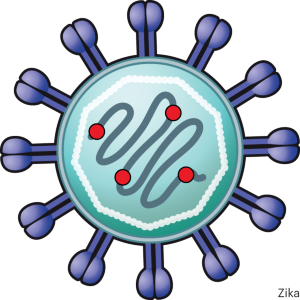
Another key contribution was the role that wastewater surveillance played in determining the dominant variant(s) within a community. Metagenomic analysis of sewage is an economically viable approach to global surveillance12 and the COVID-19 pandemic allowed this implementation in public health response. To ensure the best use of public health resources, accurate and timely wastewater surveillance results should complement existing local, regional and international surveillance efforts. Currently, data from many wastewater surveillance programmes are contextualized within local parameters. There is a need to improve comparability of results through harmonization initiatives. The absence of SARS-CoV-2 RNA signal in wastewater does not necessarily confirm the absence of the disease in the surrounding community. Many factors need to be considered including possible RNA degradation and sewer network coverage (or lack thereof). Nonetheless, the presence of SARS-CoV-2 RNA in environmental samples can support public health response.
In many parts of the world, unregulated sewage disposal gives rise to contaminated environments including surface water. Three years into the pandemic, the importance of including non-sewered (non-centralized) sampling strategies for wastewater surveillance has been a consistent theme for inclusion and diversity. However, the successes around wastewater surveillance for COVID-19 are mostly synonymous with sewered (centralized) wastewater of high-income countries. While a few pilot studies have occurred in low-and middle-income countries (LMICs), most were not sustained and did not develop into surveillance programmes supporting the COVID-19 response. Yet for decades, environmental surveillance has played a key role in the polio-eradication initiative, particularly in settings with limited health services. Samples are typically taken from sewage networks but in places where such infrastructure is lacking, environmental samples containing human faecal material may suffice. This flexible and inclusive approach for polio has demonstrated surveillance is accessible to even resource constrained areas.
Testing a range of environmental samples is important in defined settings. While centralized systems provide protection for water quality, the environment and public health, low-resource regions are at increased risk from polluted water sources acting as reservoirs for emerging or re-emerging diseases. Therefore, surveillance of impacted water sources can further support pandemic preparedness. To date, wastewater surveillance has primarily focused on pathogens circulating causing human disease while the surveillance of zoonotic pathogens in wastewater has received limited attention13. Under the One Health framework, a response to threats where wastewater covers the human–animal–environment interface is an important step forward for public health resilience. As a key global health threat, antimicrobial resistance (AMR) illustrates the need for a One Health approach. Wastewater management influences the spread of AMR whereby sites with high use of antimicrobials that are discharged into wastewater systems may be considered high risk, including healthcare facilities, livestock farms and aquaculture systems14. AMR is currently one of the leading causes of death, with a significant burden in LMICs (ref. 15). Wastewater surveillance can provide evidence for existing data gaps to expand our understanding of this threat and to support targeted interventions even where LMICs have limited healthcare facilities. Water, sanitation and hygiene (WASH) actions are central to mitigating transboundary public health threats. Wastewater surveillance allows for an agile response to looming public health threats but will require scalable and sustainable solutions to support pandemic preparedness and response.
Xiqing Li
WBE was initially developed to estimate illicit drug consumption in a community or population16. Environmental scientists, instead of epidemiologists, dominated this discipline at the early stage of its development. WBE has the unique advantage of yielding objective and real-time information on drug abuse at low cost. Soon after its incipience in 2005, this methodology has been applied in many countries across the globe.
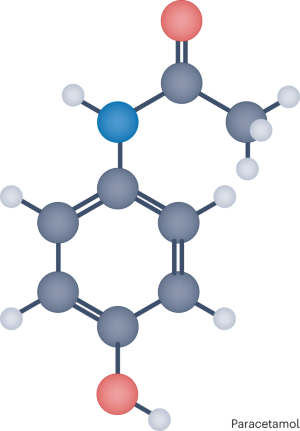
In particular, China has set up wastewater monitoring programs at local, provincial and national levels since 2018. WBE monitoring data has been used as a basis for evaluating the performance of drug control efforts at all levels. The data also helped local police to crack down drug crimes. Suspect manufacturing activities were identified from routine monitoring at sewage plants, followed by further monitoring at upstream pump stations and sewer networks to narrow down search areas. Police raids based on monitoring results led to successful dismantling of dozens of clandestine laboratories.
WBE has the potential to go beyond national levels. It is particularly relevant for the consensus-driven functioning of the United Nations’ drug control regime. Deep disagreements and contentious debates exist among member states on various policies and issues, such as harm reduction and the legalization of certain drugs (for example, cannabis). Negotiations on drug policies among United Nations member states are notoriously lengthy and often tense. The evidence-based nature of WBE evaluation could significantly facilitate such negotiations.
When estimating drug consumption via WBE, service population by a treatment plant is of fundamental importance, as consumption/loads of drugs (and of other biomarkers too) need to be normalized against it. In the literature, service population was mainly estimated using exogenous (for example, cotinine) and endogenous (for example, 5-hydroxyindoleacetic acid) population markers. However, all these markers involve huge uncertainties due to poor stability in wastewater or lack of accurate excretion rates. Mobile device data may be the most promising alternative for accurate estimation of the population.
The COVID-19 pandemic dramatically increased the awareness of WBE by public health decision-makers, traditional epidemiologists, and even the general public. It has been implemented as a complementary epidemiological surveillance tool in more than 70 countries and 4,000 sites17. Several countries, including the USA and UK, have developed national wastewater monitoring programs for SARS-CoV-2. Immediately after ending the zero-COVID policy in last December, China launched a national WBE program to monitor SARS-CoV-2 that involved over 100 key cities across the country.
In these programs, spatial and temporal trends of COVID-19 infections were reflected by monitoring the variations of viral RNA concentrations in wastewater. Wastewater monitoring has also been used as an early warning to assess and prevent outbreak of SARS-CoV-2 (ref. 18). The experience gained from wastewater surveillance of COVID-19 can also be used to monitor occurrence of new pathogens or re-emergence of known infectious diseases. In fact, WBE has played an important role in the Global Polio Eradication Initiative19.
In WBE surveillance of infectious diseases, it is very difficult for public health officials to interpret and use viral RNA or DNA concentrations in wastewater for decision-making purposes. Correlations between pathogen concentrations in wastewater and estimated infected populations are highly desirable. The amount of genetic material present in human excreta and its stability in sewers are the keys for these correlations. Determining these parameters is challenging but urgently needed.
WBE also holds promise for rapid assessment of the impact of exposure to chemical contaminants and dietary nutrients on public health. In the past decade, WBE studies have been expanded to monitor a diverse range of biomarkers, such as pharmaceutics (for example, antibiotics, benzodiazepines), pesticides, plasticizers, alcohol, tobacco and oxidative stress indicators (for example, isoprostanes). Thus, WBE is well suited for the study of exposome, which is defined as the measure of all the exposures of an individual in a lifetime and how those exposures relate to health.
Due to its ambitious aim of including total environmental exposure during an entire life, it is very challenging to bring the exposome into real-life applications20. Frequent exposome studies with sufficiently intensive biological sampling and measurements are difficult and expensive to conduct. In contrast, wastewater at a typical treatment plant contains massive exposure information of hundreds of thousands of people. WBE can be easily implemented to provide regular exposomic characterization at community, regional, national and even global scale. Furthermore, it has an additional advantage that exposure and health markers (for example, endogenous metabolites) coexist in the same matrix of wastewater and thus can be monitored simultaneously.
It is worth noting, however, that linking marker concentrations in wastewater to human exposure levels is no easy undertaking. Stability in real sewer systems and excretion rates of the markers are often not available. This may be bypassed by concurrently carrying out intensive human biomonitoring with specimens of sufficient representativeness and WBE studies in well-defined catchments. Correlations between concentrations in wastewater and human biological samples may establish such links.
Sara Castiglioni
WBE is a valuable and innovative methodology enabling the retrieval of epidemiological information from urban wastewater surveillance. Urban wastewater can be seen as a ‘treasure chest’ since it contains a complex mixture of specific endo- and exogenous products of human metabolism reflecting a wide range of patterns of factors related to lifestyle, diet habits, health/disease status and exposure to stressors. WBE consists of the chemical or biological/genetic analysis and quantification of the human metabolic residues, called biomarkers, which are contained in raw urban wastewater.
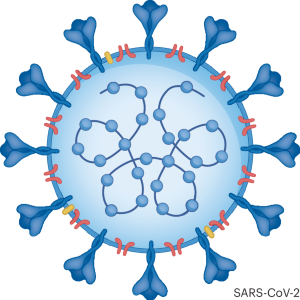
The WBE method was originally developed in 2005 at the Mario Negri Institute for Pharmacological Research to determine cocaine use in a population and was soon expanded to the main illicit drugs21. A cross-sectoral and transdisciplinary network (Sewage analysis CORe group Europe — SCORE) was established in 2010 to improve and harmonise the WBE approach by developing a common protocol of action and coordinating international studies (www.score-network.eu). SCORE worked hard to establish a ‘best practice protocol’ facing challenges related to the methodology, that is, how to collect a suitable sample, define requirements for selecting a proper WBE biomarker, check analytical performance through inter-laboratory exercises, define procedures for data elaboration and normalization22,23. Due to the ability to provide evidence-based, objective and near-real-time information, WBE started rapidly to be employed in several European countries for drug use estimation and the European Monitoring Centre for Drugs and Drug Addiction (EMCDDA) recognized it as a complementary indicator of drug use3. Besides illicit drugs, WBE was also employed to monitor other habits that may impair public health, such as the use of alcohol, tobacco and counterfeit medicines. In the same period, WBE started to be used for viral surveillance, for example, for poliovirus and enteroviruses-non polio, enabling to assess the risks of viruses spread and to identify outbreaks in real-time. WBE was soon identified as an additional ‘public health indicator’ and new applications were proposed and implemented for the surveillance of specific stressors, risk factors, exposure to xenobiotics24.
Thus in 2020, when the COVID-19 pandemic spread all over the world, WBE was an already established and reliable methodology applied to study a number of factors related to public health but the knowledge on WBE and its potential was probably restricted to a niche of experts. With COVID-19 pandemic, healthcare systems faced the urgent need to timely monitor epidemic trends and WBE was immediately regarded as one of the best tools available. Thus, WBE gained celebrity, starting to be employed for viral surveillance all over the world alongside clinical and epidemiological investigations. The European Commission recently suggested adopting urban wastewater surveillance to monitor several public health parameters. This means that WBE is nowadays regarded as a useful tool to face new public health emergencies in the future.
New perspectives may include the use of WBE to study the disease status of a population for the leading causes of death worldwide, the exposure to food and environmental contaminants, diet habits and antibiotic resistance. The great advantage will be the possibility to obtain a wide and comprehensive range of information on the health status and risk factors placed upon a community. Nevertheless, it would be very important to consider and face some WBE limitations and improve the integration of data from different sources.
Firstly, WBE is a complementary tool that can provide peculiar additional information to other epidemiological indicators but it cannot stand alone, or if alone it gives only a piece of information. The integration of information from different disciplines is still in its first steps, few attempts have been made and further methodologies should be developed and validated, this has to be highly promoted overcoming some initial resistances from established disciplines.
On the second hand, it is mandatory to follow the available best practice protocols for WBE studies that have been developed and improved over the last years. This will ensure the quality, reliability and comparability of results. For instance, the selection of a biomarker is not trivial and requires testing a panel of specific requirements, that is, having human excretion as a unique source, being excreted in amounts allowing the detection in urban wastewater, being stable in wastewater2,3.
Lastly, it would be very useful to test WBE potential to evaluate the impact of preventive interventions or to track progresses during an intervention, due to its ability for tracking rapidly changes in the health status of a population and identifying emerging risky factors. This testing may validate WBE as a new tool to inform public health policies and prevention strategies.
Kevin V. Thomas
The global SARS-CoV-2 pandemic saw wastewater-based epidemiology (WBE) make a rapid translation from a niche technology to widespread use in monitoring the spread of COVID-19. Globally, public health agencies published the results of their wastewater surveillance programs for SARS-CoV-2 at the same time as they introduced the public to WBE. In Australia the benefits of testing wastewater for SARS-CoV-2 as an early warning system were realised on several occasions, thanks to a combination of WBE surveillance and near-zero case numbers produced by strict border controls and quarantine for visitors.
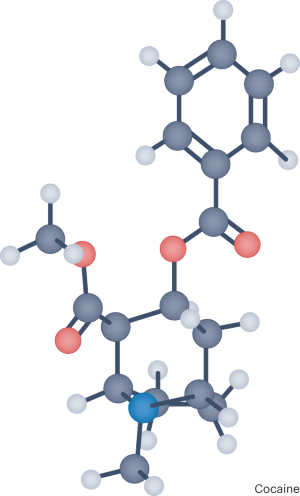
On the heels of researchers in the Netherlands and USA, Australia was quick to develop SARS-CoV-2 monitoring capability and contribute to the global effort in pivoting WBE as an effective option for monitoring the extent of the COVID-19 pandemic. Important innovations included the development of passive sampling devices to facilitate near-source testing, the analysis of waste from airplanes, cruise ships and quarantine centres, all of which contributed knowledge when there were many unknowns25,26. A very positive outcome was that the utilities that manage our sewers, public health officials and the scientists who apply WBE now speak a relatively similar language, have a greater understanding of the concepts and requirements and collaborate more closely than they did before the pandemic.
WBE earlier made a less heralded significant translation from research to application. Within a decade of the first drug WBE paper, a European collaboration, SCORE, was providing annual data on the population use of psychoactive drugs to the European Monitoring Centre for Drugs and Drug Addiction (EMCDDA) and the United Nations Office of Drugs and Crime (UNODC). The Australian Criminal Intelligence Commission (ACIC) established the Australian National Wastewater Drug Monitoring Program in 2016 and the approach was commercialised by Biobot Analytics in the USA.
The maturity of the field was demonstrated at the 5th Testing the Waters International WBE conference in Brisbane in 2021. In addition to papers on population drug and COVID-19 surveillance, WBE was used to assess a range of community specific factors, such as diet, oxidative stress and allergen burdens, consumption of new psychoactive substances, performance and image enhancing substances, exposure to man-made chemicals and the prevalence of antimicrobial resistant genes. The chemical information in wastewater was shown to reflect the social, demographic and economic properties of populations27.
The doors that were opened during the pandemic need to be kept open. Greater inter-disciplinary and international collaboration is required to ensure that the gains made using WBE in the COVID-19 pandemic can provide early warnings of future pandemics. A global aircraft-based wastewater genomic surveillance network at strategically selected international airports would enable real-time monitoring of infectious disease spread28. Agencies such as the World Health Organisation need to enable the creation of divergent surveillance networks to prevent us from sleep walking into the next pandemic. These networks will require the use of innovative sampling technologies that enable near-source applications and could be integrated with human biomonitoring to inform global One Health actions29.
Researchers will need to address ethical concerns that the public and some stakeholders may raise about WBE. We need to increase awareness of how ethical and privacy considerations are addressed by WBE researchers30. We will also need to be proactive in addressing new ethical issues that may arise if we are to safeguard the privacy of the populations whose health WBE seeks to protect.
The integrated surveillance of biological and chemical biomarkers has already begun and will become commonplace. These WBE surveillance data can be combined with other data for longitudinal triangulation between datasets and the potential use of machine learning to recognise patterns and allow the prediction of future patterns of population health. By then WBE should have realised its full potential for early warning of new pandemics or environmental threats to population health.
References
J. Am. Med. Assoc. 60, 156–156 (1913).
Trask, J. D., Vignec, A. J. & Paul, J. R. P. J. Am. Med. Assoc. 111, 6–11 (1938).
Paul, J. R., Trask, J. D. & Culotta, C. S. Science 90, 258–259 (1939).
Guidelines for Environmental Surveillance of Poliovirus Circulation (WHO, 2003); https://apps.who.int/iris/bitstream/handle/10665/67854/WHO_V-B_03.03_eng.pdf?sequence=1&isAllowed=y
Wastewater-based Disease Surveillance for Public Health Action (The National Academies Press, 2023).
Chua, F. J. D. et al. Sci. Total Environ. 875, 162611 (2023).
Lee, W. L. et al. Water Res. 221, 118809 (2022).
Chandra, F. et al. ACS Environ. Sci. Water 3, 974–983 (2023).
Mota, C. R. et al. Water Res. 202, 7388 (2021).
Adhikari, S. & Halden, R. U. Environ. Int. 163, 107217 (2022).
O'Brien, E. & Xagoraraki, I. One Health 7, 100094 (2019).
Hendrikson, R. S. et al. Nat. Commun. 10, 1124 (2019).
Xiao, K. & Zhang, L. Lancet Microbe 4, e297 (2023).
Technical Brief on Water, Sanitation, Hygiene and Wastewater Management to Prevent Infections and Reduce the Spread of Antimicrobial Resistance (FAO, 2020); https://www.fao.org/3/ca9120en/CA9120EN.pdf
Murray, C. J. L. et al. Lancet 399, 629–655 (2022).
Zuccato, E. et al. Environ. Health. 4, 14 (2005).
Prado, T. et al. Sci. Total Environ. 865, 161210 (2023).
Deng, Y. et al. Sci. Total Environ. 821, 153250 (2022).
Brouwer, A. F. et al. Proc. Natl Acad. Sci. USA 115, 10625–10633 (2018).
Fang, M. et al. Innovation 2, 100172 (2021).
Zuccato, E., Chiabrando, C., Castiglioni, S., Bagnati, R. & Fanelli, R. Environ. Health Perspect. 116, 1027–1032 (2008).
Castiglioni, S. et al. Environ Sci Technol. 47, 1452–1460 (2013).
Assessing illicit drugs in wastewater. EMCDDA https://www.emcdda.europa.eu/news/2016/emcdda-presents-latest-advances-wastewater-analysis_en (2016).
Choi, M. et al. TrAC 105, 453–469 (2018).
Schang, C. et al. Environ. Sci. Technol. 55, 10432–10441 (2021).
Ahmed, W. et al. J. Travel Med. 27, taaa116 (2020).
Choi, P. M. et al. PNAS 116, 21864–21873 (2019).
Li, J. et al. The Lancet Glob. Health 11, e791–e795 (2023).
Kasprzyk-Hordern, B. et al. J. Hazardous Mater. 450, 131009 (2023).
Hall, W. et al. Addiction 107, 1767–1773 (2012).
Author information
Authors and Affiliations
Corresponding authors
Rights and permissions
About this article
Cite this article
Singer, A.C., Thompson, J.R., Filho, C.R.M. et al. A world of wastewater-based epidemiology. Nat Water 1, 408–415 (2023). https://doi.org/10.1038/s44221-023-00083-8
Published:
Issue Date:
DOI: https://doi.org/10.1038/s44221-023-00083-8
This article is cited by
-
When performance-enhancing substances are on the rise
Nature Water (2023)
